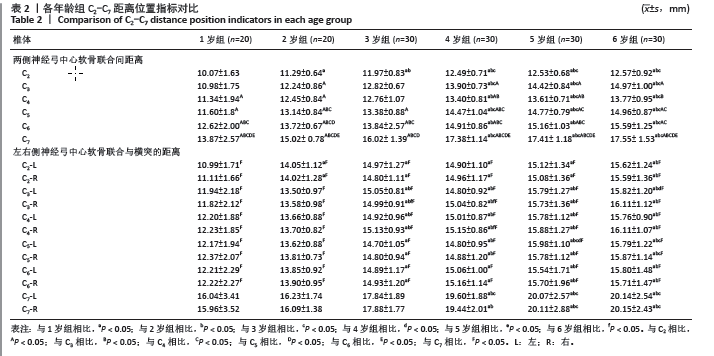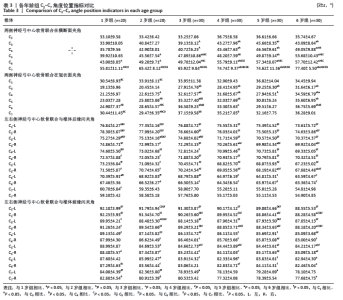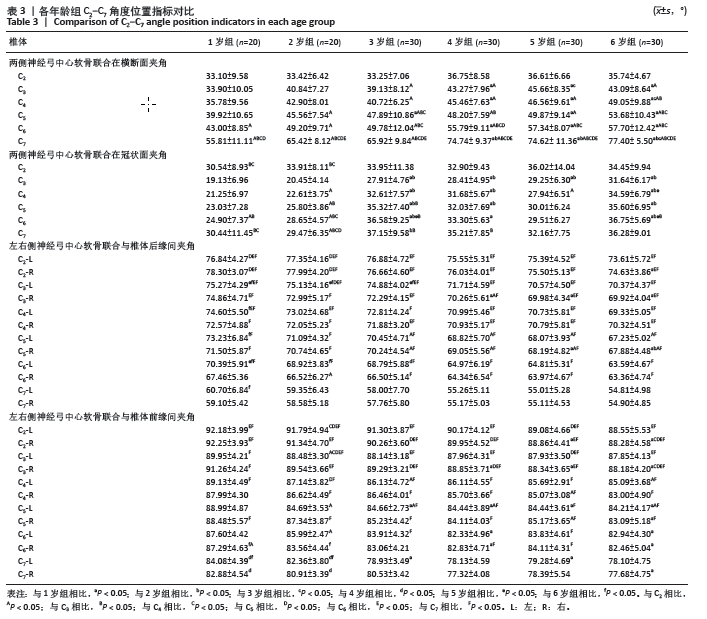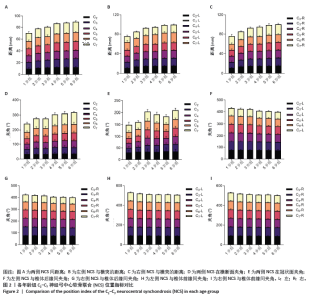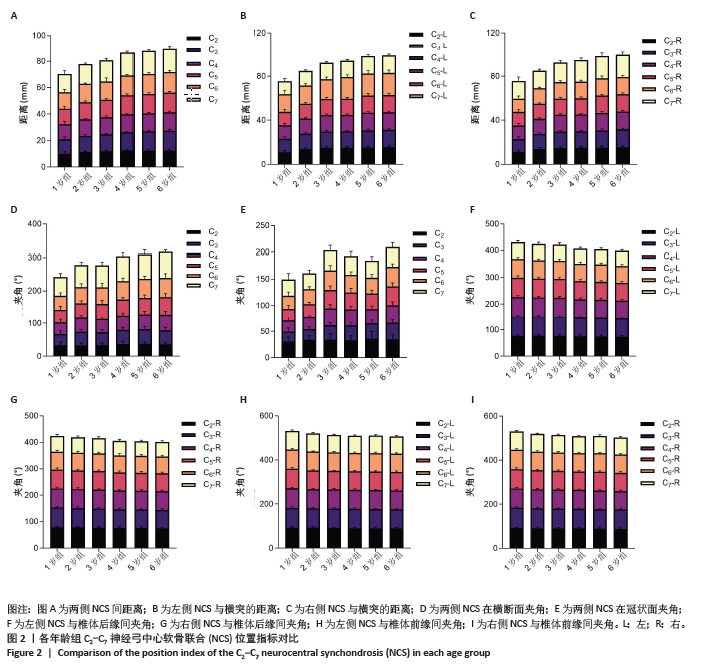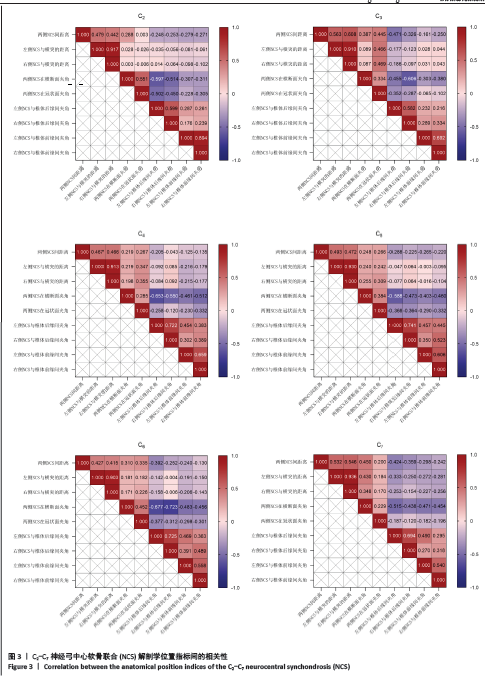[1] ARMIENTO AR, ALINI M, STODDART MJ. Articular fibrocartilage - Why does hyaline cartilage fail to repair? Adv Drug Deliv Rev. 2019;146: 289-305.
[2] LOPATIN O, BARSZCZ M, WOŹNIAK KJ. Skeletal and dental age estimation via postmortem computed tomography in Polish subadults group. Int J Legal Med. 2023;137(4):1147-1159.
[3] OLSTAD K, BUGGE MD, YTREHUS B, et al. Closure of the neuro-central synchondrosis and other physes in foal cervical spines. Equine Vet J. 2024. doi: 10.1111/evj.14093.
[4] WU WL, SHAO XB, SHEN YG, et al. Sex-specific differences in ossification patterns of the atlas and axis: a computed tomography study. World J Pediatr. 2022;18(4): 263-270.
[5] BYRD SE, COMISKEY EM. Postnatal maturation and radiology of the growing spine. Neurosurg Clin N Am. 2007;18(3):431-461.
[6] SHIN JI, LEE NJ, CHO SK. Pediatric Cervical Spine and Spinal Cord Injury: A National Database Study. Spine. 2016;41(4):283-292.
[7] JITIN B. Cervical Spondylosis and Atypical Symptoms. Neurol India. 2021;69(3):602-603.
[8] 冯会梅,王星,张少杰,等. 有限元法分析0-6岁儿童枕寰枢复合体发育及其生物力学的变化特征[J]. 中国组织工程研究,2018, 22(23):3710-3715.
[9] 胡哲,赵海岩,张少杰,等. Micro-CT评估C2-C7关节突微结构区域特征及其结构功能稳定性[J]. 中国组织工程研究,2021,25(33): 5356-5361.
[10] PIATT J. Penetrating spinal injury in childhood: the influence of mechanism on outcome. An epidemiological study. J Neurosurg Pediatr. 2018;22(4):384-392.
[11] SPINNATO P, ZARANTONELLO P, GUERRI S, et al. Atlantoaxial rotatory subluxation/fixation and Grisel’s syndrome in children: clinical and radiological prognostic factors. Eur J Pediatr. 2021;180(2):441-447.
[12] 马明,张世民. 青年颈椎病的研究进展[J]. 中国骨伤,2014,27(9): 792-795.
[13] MEINIG H, MATSCHKE S, RUF M, et al. [Diagnostics and treatment of cervical spine trauma in pediatric patients : Recommendations from the Pediatric Spinal Trauma Group]. Der Unfallchirurg. 2020;123(4): 252-268.
[14] MARINE MB, FORBES-AMRHEIN MM. Fractures of child abuse. Pediatr Radiol. 2021;51(6):1003-1013.
[15] ZHANG SJ, LI K, LI ZJ, et al. Anatomical Study on the Safety of Anterior Cervical Craniovertebral Fusion with Clival Screw Placement in Children Aged 1-6 Years. Int J Gen Med. 2021;14: 5787-5794.
[16] 丁延. 儿童寰椎椎弓根螺钉进钉点及进钉方式的研究[D].郑州:郑州大学,2021.
[17] KHANNA G, EL-KHOURY GY. Imaging of cervical spine injuries of childhood. Skeletal Radiol. 2007;36(6):477-494.
[18] PLATZER P, JAINDL M, THALHAMMER G, et al. Cervical spine injuries in pediatric patients. J Trauma. 2007;62(2):389-396; discussion 94-96.
[19] BECKMANN NM, CHINAPUVVULA NR, ZHANG X, et al. Epidemiology and Imaging Classification of Pediatric Cervical Spine Injuries: 12-Year Experience at a Level 1 Trauma Center. AJR Am J Roentgenol. 2020;214(6):1359-1368.
[20] ZUCKERMAN SL, DEVIN CJ. Pseudarthrosis of the Cervical Spine. Clin Spine Surg. 2022;35(3):97-106.
[21] PRASHER S, LANDES C. The cervical spine in paediatric radiology. Br J Hosp Med (Lond). 2022;83(11):1-9.
[22] ZENZES M, ZASLANSKY P. Micro-CT data of early physiological cancellous bone formation in the lumbar spine of female C57BL/6 mice. Sci Data. 2021;8(1):132.
[23] BAFFOUR FI, GLAZEBROOK KN, FERRERO A, et al. Photon-Counting Detector CT for Musculoskeletal Imaging: A Clinical Perspective. AJR Am J Roentgenol. 2023;220(4):551-560.
[24] IBRAHIM N, PARSA A, HASSAN B, et al. Comparison of anterior and posterior trabecular bone microstructure of human mandible using cone-beam CT and micro CT. BMC Oral Health. 2021;21(1):249.
[25] 马剑雄,赵杰,何伟伟,等.高分辨率外周定量计算机断层扫描评估骨小梁微结构和骨强度的研究进展[J]. 生物医学工程学杂志, 2018,35(3):468-474.
[26] LI K, JI Y, SHI J, et al. Examination of the microstructures of the lower cervical facet based on micro-computed tomography: A cadaver study. Medicine. 2022;101(50):e31805.
[27] LI K, YANG Y, WANG P, et al. Exploring the micromorphological characteristics of adult lower cervical vertebrae based on micro-computed tomography. Sci Rep. 2023;13(1):12400.
[28] BAKER JF. Analysis of Upper Cervical Spine Measurements in the Uninjured Pediatric Spine. Int J Spine Surg. 2022;16(3):458-464.
[29] POILLIOT A, GAY-DUJAK MH, MÜLLER-GERBL M. The quantification of 3D-trabecular architecture of the fourth cervical vertebra using CT osteoabsorptiometry and micro-CT. J Orthop Surg Res. 2023;18(1):297.
[30] 刘金磊,李志军,张少杰,等. Micro-CT对椎弓根微观结构的观测及临床应用的研究进展[J]. 保健文汇,2019(7):162-163.
[31] 李琨,张少杰,史君,等.下颈椎椎弓根的显微形态学特征[J]. 中国组织工程研究,2024,28(12):1890-1894.
[32] VITAL JM, BEGUIRISTAIN JL, ALGARA C, et al. The neurocentral vertebral cartilage: anatomy, physiology and physiopathology. Surg Radiol Anat. 1989;11(4):323-328.
[33] MADURA CJ, JOHNSTON JM JR. Classification and Management of Pediatric Subaxial Cervic Spine Injuries. Neurosurg Clin N Am. 2017; 28(1):91-102.
[34] KOKOSKA ER, KELLER MS, RALLO MC, et al. Characteristics of pediatric cervical spine injuries. J Pediatr Surg. 2001;36(1):100-105.
[35] BROWN RL, BRUNN MA, GARCIA VF. Cervical spine injuries in children: a review of 103 patients treated consecutively at a level 1 pediatric trauma center. J Pediatr Surg. 2001;36(8):1107-1114.
[36] SHENG SR, XU HZ, WANG YL, et al. Comparison of Cervical Spine Anatomy in Calves, Pigs and Humans. PloS one. 2016;11(2):e0148610. |

